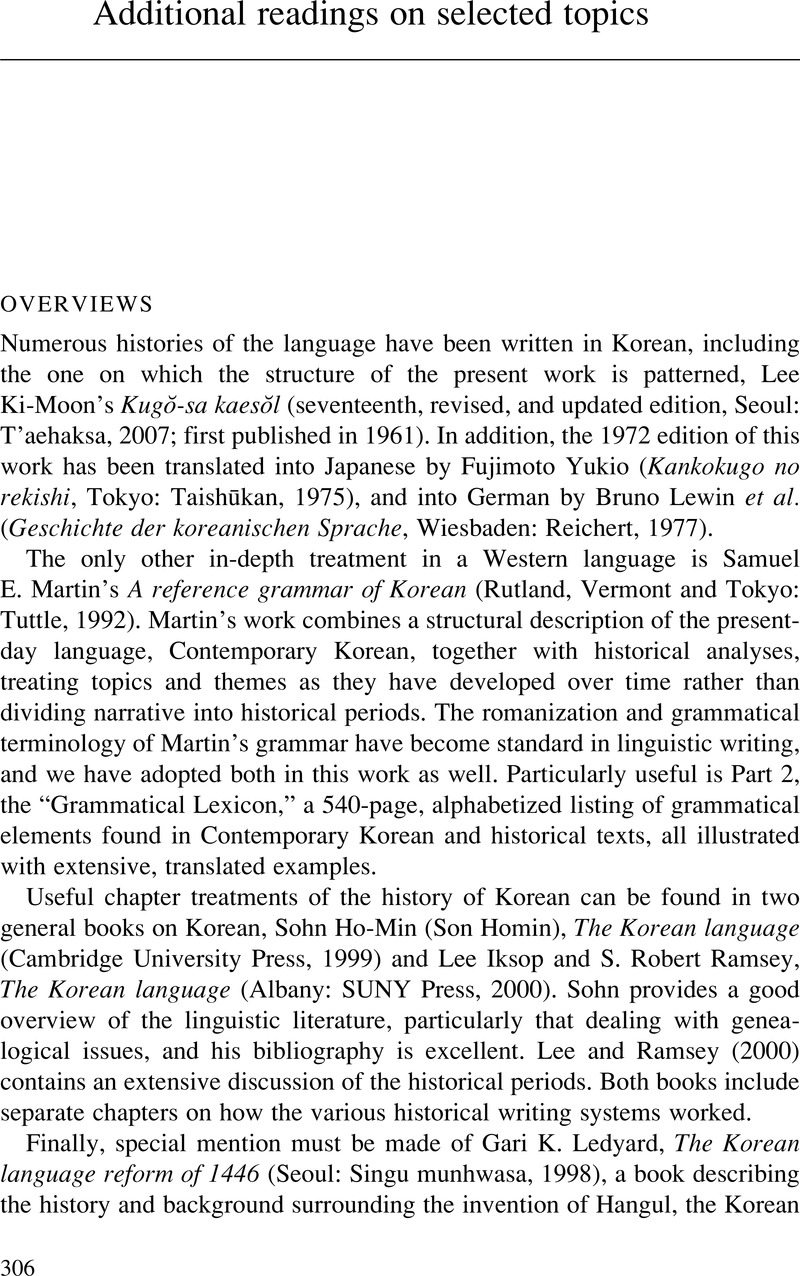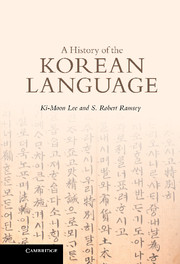Book contents
Additional readings on selected topics
Published online by Cambridge University Press: 05 June 2012
Summary

- Type
- Chapter
- Information
- A History of the Korean Language , pp. 306 - 315Publisher: Cambridge University PressPrint publication year: 2011

